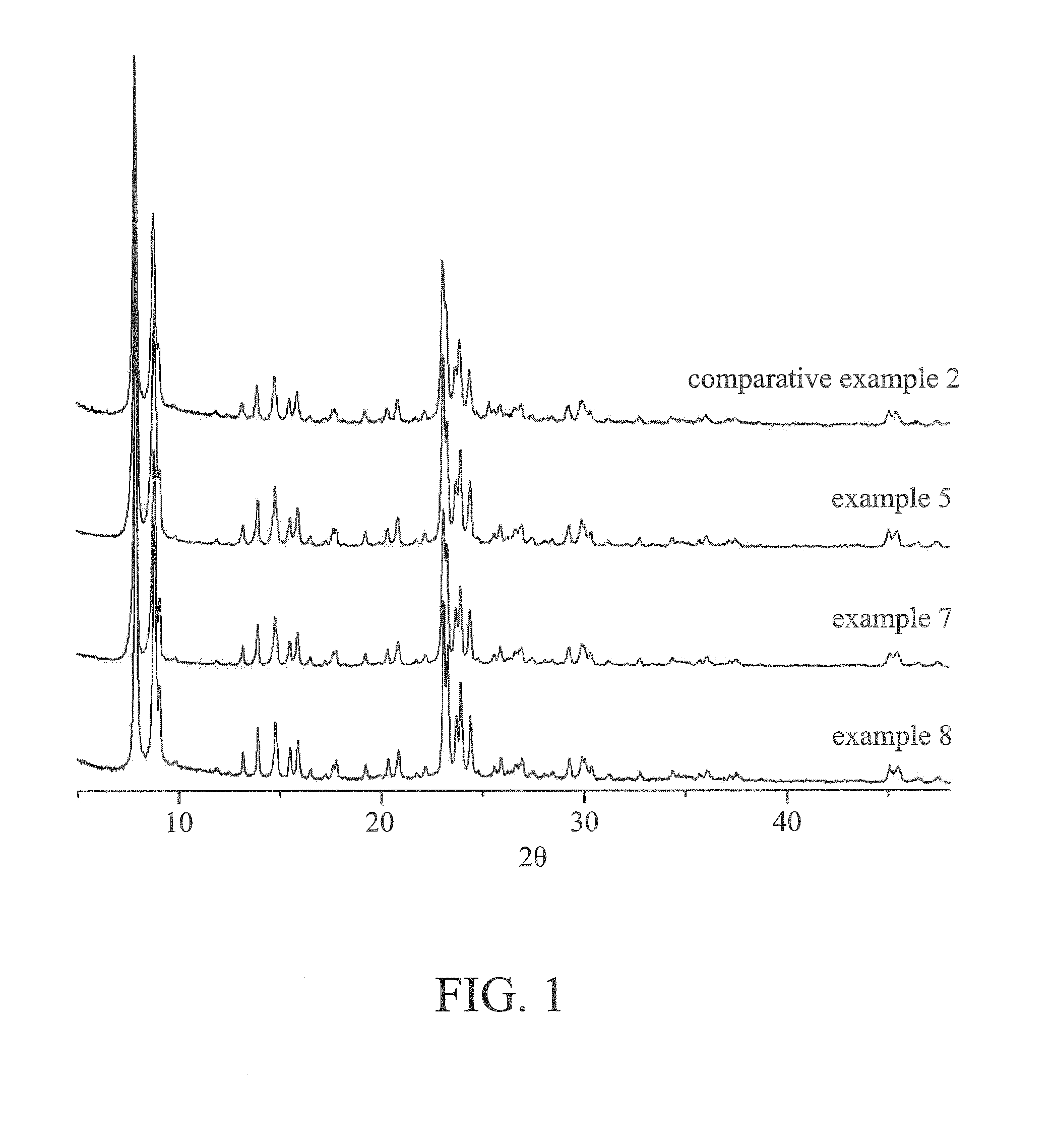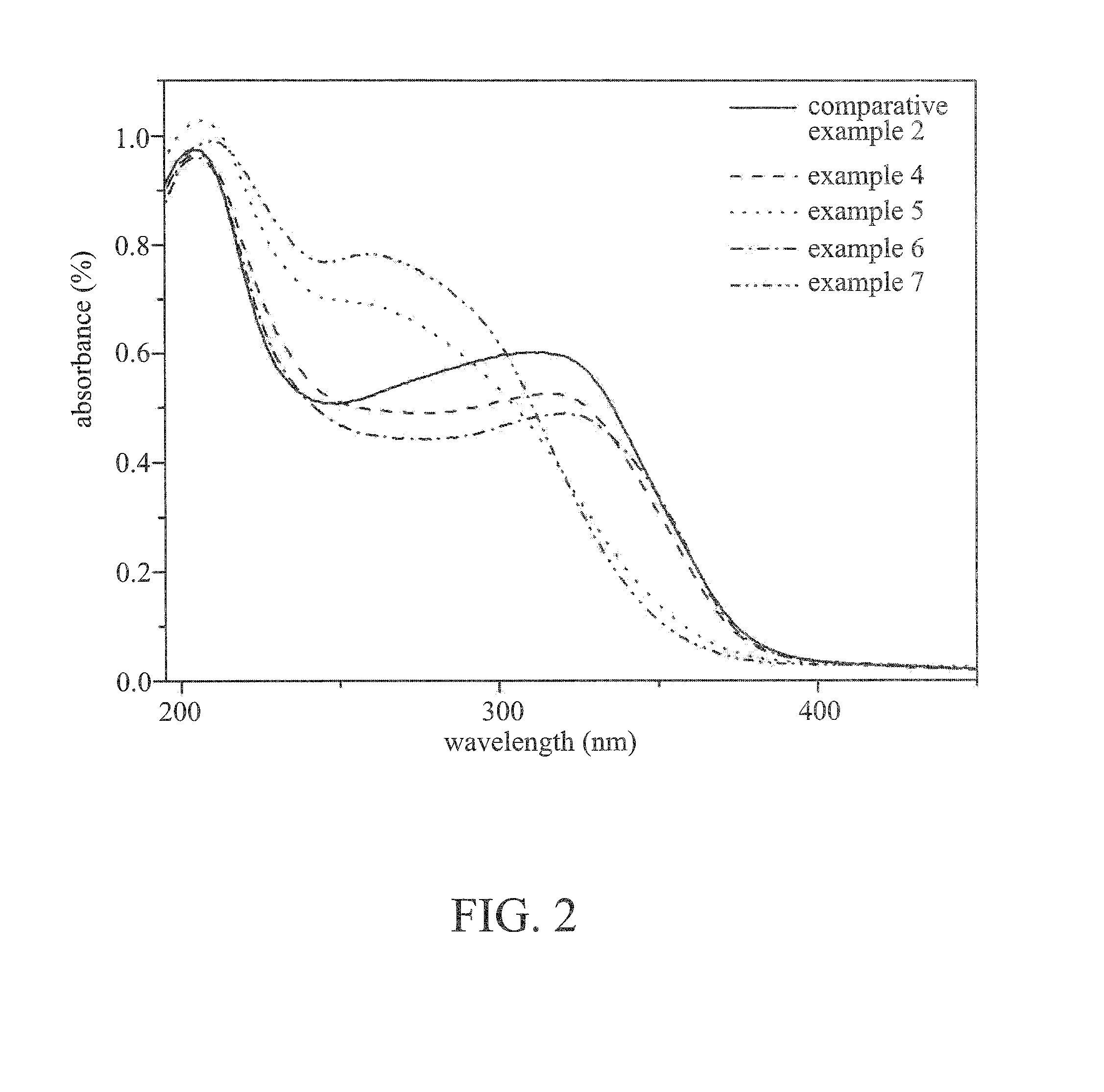Method for producing epoxide
- Summary
- Abstract
- Description
- Claims
- Application Information
AI Technical Summary
Benefits of technology
Problems solved by technology
Method used
Image
Examples
embodiment 1
[0036]A 500 mL round-bottomed flask was sealed with nitrogen in a vacuum system. 60 g of tetraethyl silicate and 112 g (20 wt %) of a tetra-n-propyl ammonium hydroxide isopropanol solution were added to the round-bottomed flask, and continuously stirred at 5° C. After the temperature reached the equilibrant, 3.38 g of tetra-n-butyl titanate was added to the round-bottomed flask, and continuously stirred for 1 hour. Then, 0.48 g of calcium chloride and 89.6 g of water were thoroughly mixed, gradually added to the round-bottomed flask using an isobaric feeding-tube, and stirred for 1 hour to obtain a gel mixture. Alcohol in the gel mixture was then removed at 85° C. for 1.5 hours.
[0037]At the same time, a dispersion was prepared by dispersing 21.60 g of silica sol solution (40%) in 147 g of water. The dispersion was added to the gel mixture underwent alcohol removal, and further stirred for 1 hour. The gel mixture (underwent alcohol removal and containing the dispersion) was sealed in...
embodiment 2
[0038]The titanium-silicon molecular sieve was prepared by the same process as embodiment 1 except that calcium chloride was replaced with strontium nitrate (0.91 g) in embodiment 2. The ratio of x, y and z in the titanium-silicon molecular sieve is shown in Table 1.
embodiment 3
[0039]The titanium-silicon molecular sieve was prepared by the same process as embodiment 1 except that calcium chloride was replaced with barium chloride (0.53 g) in embodiment 3. The ratio of x, y and z in the titanium-silicon molecular sieve is shown in Table 1.
PUM
 Login to View More
Login to View More Abstract
Description
Claims
Application Information
 Login to View More
Login to View More - R&D
- Intellectual Property
- Life Sciences
- Materials
- Tech Scout
- Unparalleled Data Quality
- Higher Quality Content
- 60% Fewer Hallucinations
Browse by: Latest US Patents, China's latest patents, Technical Efficacy Thesaurus, Application Domain, Technology Topic, Popular Technical Reports.
© 2025 PatSnap. All rights reserved.Legal|Privacy policy|Modern Slavery Act Transparency Statement|Sitemap|About US| Contact US: help@patsnap.com


